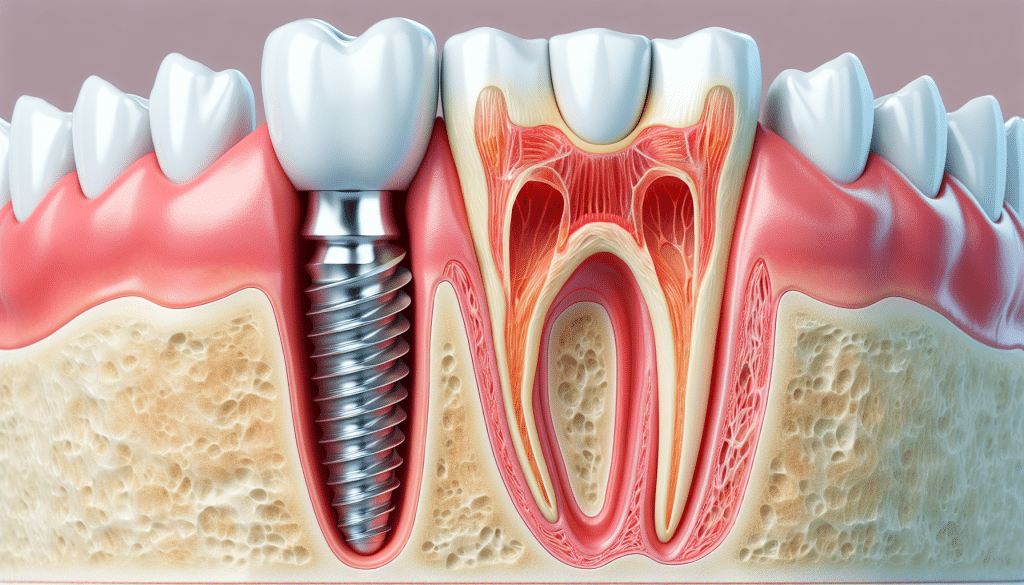
Dental implants are artificial tooth roots made from biocompatible materials, such as titanium, that are surgically placed into the jawbone to support replacement teeth like crowns, bridges, or dentures. They offer a long-lasting solution for missing teeth and help restore both function and appearance. Here’s an overview of dental implant treatment, its benefits, and what to expect.
How Dental Implants Work
- The Implant : The implant itself is a small titanium post that serves as an artificial tooth root, anchoring the replacement tooth securely in the jaw.
- The Abutment : Once the implant integrates with the jawbone, a small connector called an abutment is attached to the implant. The abutment holds the replacement tooth in place.
- The Crown : The final component is the crown, which is a custom-made artificial tooth that matches the color and shape of your natural teeth. It is attached to the abutment for a natural look and function.
Types of Dental Implants
Endosteal Implants:
- These are the most common type and are placed directly into the jawbone.
- They are typically shaped like screws and can support one or more replacement teeth.
Subperiosteal Implants:
- These implants are placed under the gum but on or above the jawbone.
- They are used for patients who don’t have enough healthy jawbone for endosteal implants.
All-on-4 Implants:
- This technique uses four implants to support a full arch of replacement teeth.
- It is a good option for patients needing a complete set of upper or lower teeth.
Benefits of Dental Implants
Natural Look and Feel
- Implants provide a stable and realistic-looking solution that functions like natural teeth.
Durability and Longevity
- With proper care, dental implants can last a lifetime, making them a cost-effective solution in the long run.
Prevention of Bone Loss
- Implants stimulate the jawbone, preventing the bone loss that often occurs with missing teeth.
Improved Oral Health
- Unlike bridges, implants do not require altering adjacent teeth, preserving the structure of your natural teeth.
Enhanced Comfort and Confidence
- Implants eliminate the discomfort of removable dentures and help improve speech and chewing.
What to Expect During Dental Implant Treatment
Initial Consultation
- The dentist will evaluate your oral health, take X-rays, and create a treatment plan tailored to your needs.
Bone Grafting (if necessary)
- If the jawbone is not strong enough to support the implant, a bone graft may be required before implant placement.
Implant Placement Surgery
- The implant is surgically placed into the jawbone. Healing time varies but usually takes several months as the implant fuses with the bone.
Abutment Placement
- Once the implant integrates with the bone, an abutment is attached to the implant.
Placement of the Crown
- Finally, a custom-made crown is attached to the abutment, completing the restoration.
Aftercare Tips
Maintain Good Oral Hygiene
- Brush and floss daily to keep the implant area clean and healthy.
Regular Dental Check-ups
- Visit your dentist for routine cleanings and check-ups to ensure the health of the implant.
Avoid Hard Foods
- Refrain from chewing hard objects like ice, which can damage the crown.
Dental implant F&Q
Dental implants are artificial tooth roots made from titanium that are surgically inserted into the jawbone to support a replacement tooth or bridge. Over time, they fuse with the bone, providing a stable foundation for the artificial tooth.
Most people who are in good general and oral health are suitable candidates for dental implants. Adequate bone density in the jaw is necessary to support the implant, but bone grafting procedures can be done for those with bone loss.
Dental implants are designed to be a long-lasting solution and can last a lifetime with proper care and maintenance, such as regular brushing, flossing, and dental check-ups.
The procedure is typically performed under local anesthesia, so patients do not feel pain during the surgery. Some discomfort may be experienced during the healing process, but it is usually manageable with over-the-counter pain medications.
The entire process can take several months. After the initial implant placement, the healing and integration period usually lasts 3-6 months, followed by the placement of the abutment and crown.
Although dental implants are generally safe, risks include infection, injury to surrounding teeth, nerve damage, and implant failure. Following the dentist’s post-operative instructions minimizes these risks.












